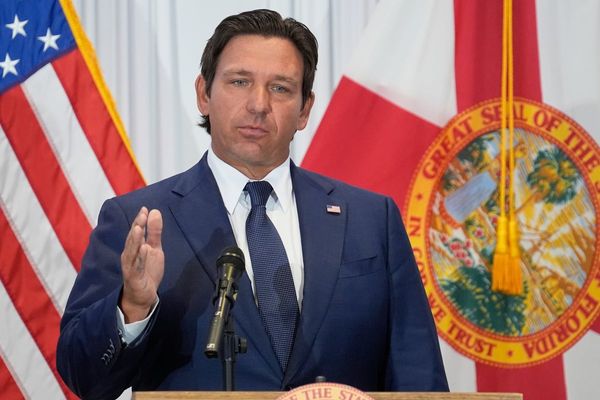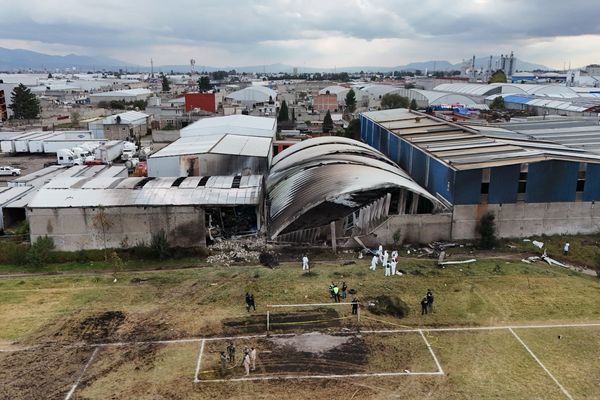
Hundreds of rural hospitals across the U.S. are bracing for potential service cuts or imminent closures due to President Donald Trump’s steep Medicaid cuts.
The Trump administration's so-called "One Big Beautiful Bill" (OBBB), signed into law on July 4, will slash Medicaid spending by an estimated $1.02 trillion to offset tax cuts. The expensive measure adds over $3 trillion to the national debt over the next decade.
Now, over 300 rural hospitals are bracing for immediate closure. That might include your local hospital.
Some experts predict that cuts to Medicaid will impact nearly every state, with most expected to see more than 25% of their hospitals shut down. In 11 states, the risk is even higher, with 50% or more of hospitals at risk.
That’s because rural hospitals often have lower financial reserves, meaning any reduction in revenue could lead to closures or force some to roll back essential services.
President Donald Trump’s tax overhaul legislation represents the largest federal rollback to Medicaid to date.
Here are three things you need to know about what Trump’s Medicaid cuts could mean for you in 2025.
1. Are hospitals closing due to Medicaid cuts?
Overall, more than 700 rural hospitals could close due to Medicaid cuts, which translates to one-third of all rural hospitals in the country. As noted, an estimated 300 are at immediate risk of shutting down.
The most at-risk hospitals are located in isolated rural communities, which would force residents to travel long distances for inpatient or emergency care.
These hospitals may also be reliant on Medicaid reimbursements, as studies show that adults and children in small towns and rural communities are more likely to have Medicaid or the Children’s Health Insurance Program (CHIP).
The top five states that could see the most closures are red states led by Kansas.
- In Kansas, an estimated 66 rural hospitals could be on the chopping block, according to the Center for Healthcare Quality & Payment Reform, with 89 facing service cuts.
- Researchers project that 28 rural hospitals in Kansas are at immediate risk of closing due to Medicaid cuts.
- This would be followed by Oklahoma, Alabama, Texas, and Mississippi.
- As a snapshot, in Texas, as many as 108 (or 69%) of rural hospitals would face losses in services. An estimated 66 hospitals are at risk of closing, with 29 flagged under immediate risk.
2. Many rural hospitals rely on Medicaid
Rural hospitals face unique challenges with funding that are aggravated by insufficient health insurance reimbursements and unstable revenue streams from local taxes or government grants.
Many rural and frontier hospitals also face closure risks because private insurance plans pay them less than what it costs to deliver services to patients. These often offset hospital losses on services delivered to uninsured and Medicaid patients.
The major funding cut for Medicaid spending in the OBBB will be a significant loss for struggling facilities.
According to estimates from Manatt Health, rural hospitals stand to lose $70 billion over the next decade as a result of Trump’s tax cuts and spending legislation. Put it another way: Hospitals are projected to lose 21 cents from every Medicaid dollar received.
- In Kansas, where more than half of rural hospitals are at risk of closing, facilities will see an estimated 15% reduction in Medicaid reimbursement.
- Missouri, where one-third of rural hospitals could close, can expect a 29% reduction.
- In West Virginia, the reductions in Medicaid funding could translate to a 22% loss in reimbursement.
“Medicaid is a substantial source of federal funds in rural communities across the country,” said Alan Morgan, CEO of the National Rural Health Association (NRHA). “It’s very clear that Medicaid cuts will result in rural hospital closures, resulting in loss of access to care for those living in rural America.”
3. Rural hospitals closing: Trump’s stop-gap won’t last
The final version of Trump’s megabill includes $50 billion in relief funding over six-year period to keep rural hospitals and frontier hospitals afloat.
The financial cushion to be administered by a newly created Rural Health Transformation Program would still come up short to filling the $1.02 trillion budget gap in Medicaid spending, according to tax policy analysts.
According to the OBBB, the $50 billion in funds is to be delivered in two ways to rural health care facilities:
1. Half will be delivered to states that apply to the Rural Health Transformation Program, with a detailed "rural health transformation plan" explaining how rural hospitals will improve access to facilities, other health care providers, and services to their residents, among other strategies.
2. The other 50% of the funds will be distributed to states in a process yet to be determined.
3. The U.S. Treasury Department will provide an allotted amount of $10 billion per year to rural health care providers, starting on fiscal year 2026 through 2030.
4. These funds include rural hospitals, rural health clinics, community mental health centers, and federally qualified health centers.
5. States must apply no later than December 31, 2025, to be considered for the allotted funding.
As part of the detailed “rural health transformation plan,” rural hospitals that apply for funding must identify specific causes driving the accelerating rate of stand-alone rural hospitals becoming at risk of closure, conversion, or service reduction.
Medicaid cuts in the 'Big Beautiful Bill': What you can do to prepare
Approximately 60 million people in the U.S. rely on rural hospitals and health care facilities, according to the Bipartisan Policy Center, representing 20% of the population.
The Trump administration’s major budget rollback for Medicaid will inevitably be a source of financial strain for rural health care facilities that are already struggling. The Center for Healthcare Quality & Payment Reform, estimates that more than 700 rural hospitals could face closures due to the newly enacted tax policy.
As ruled by the OBBB, states can apply for allocated funding for rural hospitals and health care facilities via the Rural Health Transformation Program. State governments may also come up with different revenue sources to streamline funds to these essential providers.
These developments should happen in the upcoming months, so stay tuned to your local authorities and how they respond the new tax landscape.







